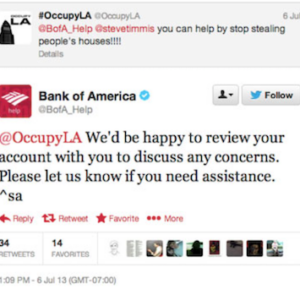By Mita Mallick
There has recently been an intense DEI backlash felt across the country, from legislation being passed locally and nationally, to companies defunding DEI initiatives, to leaders like Elon Musk saying things like “DEI must DIE.” Now, many are questioning the future of DEI work.
But now is not the time to abandon our efforts to create more inclusive organizations. Once again, we need leaders to understand that inclusion is a driver of the business. Inclusion is a competitive advantage, and those who harness the power of inclusion will outpace their competition in the marketplace. Those who choose to ignore the power of inclusion will ultimately be left behind.
Here are just four of the many ways in which inclusion boosts businesses’ bottom lines—and how to remind leaders about the importance of inclusion in our workplaces:
Inclusion is tied to productivity
As an employee who has worked for small companies and big companies, across many different sectors, one thing has remained constant: The more I have felt valued and included at work, the more I am engaged and committed to making an impact. Feeling included is directly related to how productive I am on any given day.
According to Harvard Business Review, microaggressions can impact our careers in a multiple of ways, including increased burnout and decreased job satisfaction. It can take significant emotional, physical, and sometimes financial resources to recover from the impact of repeated harm in the workplace. In fact, 7 out of 10 employees say they would be upset by a microaggression, and 50% of employees would consider resigning.
Many of us are hired for our expertise and our track record of success. We want to come to work and be at 100% capacity; we want to make meaningful contributions. But imagine if the environment you are in doesn’t allow you to do this. For instance, if you are kept off meeting invites, if colleagues make fun of your accent, if you keep having your work stolen, if colleagues exclude you from lunch outings, if you are taken off an initiative you put hours into with no explanation. Given these factors in the environment, your 100% capacity to contribute can drop to 75% to even 50%. Rather than being able to focus on the work you were hired to do, your energy is instead spent worrying about whether or not you actually belong at this organization.
If this happens to multiple individuals over time, this can be a huge drop in productivity for an organization. Imagine the hours lost and wasted that can’t be recovered. This can negatively impact the bottom line. DEI work is designed to stop productivity-killing microaggressions like these. When employees feel valued, respected and recognized for their contributions at work, they are able to unlock their potential. And in turn, they can help the company unlock their potential.
Inclusion helps us uncover business opportunities
In my new book, Reimagine Inclusion: Debunking 13 Myths to Transform Your Workplace, I address again the business case for inclusion. Because it needs to be repeated once again to reach individuals who underestimate, dismiss or minimize the importance of inclusion. When it comes to attracting talent, we must recognize that in countries like the United States, worker demographics continue to shift rapidly. According to the U.S. Census data, currently over 40% of individuals in the country identify as non-white. By 2050, it’s predicted over 50% of individuals in the country will identify as non-white.
The war for attracting talent will continue into 2024. According to background screening platform Checkr, 72% of leaders felt they faced significant hiring challenges in 2023. And, in 2024, only 34% of leaders feel confident that they will meet their hiring goals. According to the Bureau of Labor Statistics, the unemployment rate dropped to 3.7% in November. And the percentage of individuals who are looking or looking for work, known as the labor force participation rate, has not returned to pre-pandemic levels.
Creating inclusive environments, where every individual can reach their full potential, is a key factor in attracting talent to help uncover new business opportunities. In fact, 53% of employees say inclusion efforts play a role in where they ultimately decide to work according to an Eagle Hill Consulting Survey,
When we have diversity of representation in the room, when individuals are given a seat at the table, and their voices matter, we can create breakthrough ideas and unlock business opportunities which have never been thought of before. Our different lived experiences give us a new window into surprising and delighting individuals with products and services. We are able to tap into opportunities we had never thought of before because we are intentionally widening our worldview. According to the World Economic Forum’s Diversity, Equity and Inclusion report, companies with more diverse workforces generate more creativity, and as a result have 19% higher revenue from innovation.
aAccording to P&G, the buying power of the multicultural consumer is over $5 trillion. This doesn’t include the spending power of veterans, individuals with disabilities, the LGBTQ+ community, and more. When leaders think there’s no growth to be had, they need to ask themselves the following: Who are we selling to and why? Who are we intentionally or unintentionally excluding and why?
There is growth to be found even in the toughest of markets. Viewing business opportunities through the lens of inclusion, serving communities that your competition is ignoring, will ultimately generate more revenue for your organization.
Inclusion is the most powerful retention tool we have
When talent walks out the door, the cost is higher than we might think. According to Gallup, the cost of replacing an individual employee that resigns can be anywhere from one-half to two times their annual salary—and that’s a conservative estimate. In totality, U.S. businesses lose close to $1 trillion dollars every year to employees quitting.
According to a FlexJob report, some of the top reasons employees quit their companies include unfair pay, toxic workplace culture, feeling undervalued, limited advancement, bad boss, and misaligned values. Many of these reasons and more can be traced back to a lack of an inclusive culture.
Many leaders under-utilize insights from employee exit interview surveys, where people say exactly why they are leaving. In exit interview surveys workers often say that they don’t feel valued for their contributions or their work, they feel excluded, and move on to find places that will include and recognize their impact.
In my experience, it’s not the endless supply of free snacks, that meditation app and room, the ping pong table, or the laundry list of fancy perks that get employees to stay at an organization. When individuals feel that they are included on their teams and in their workplaces, they are less likely to look elsewhere for career opportunities. When workers feel included, they are more likely to be motivated, engaged, and happier at work. Inclusion is the most powerful retention tool available to leaders. Inclusion can also help drive productivity and help us uncover new opportunities for growth.
Ultimately, inclusion is a driver of the business. Those leaders who accept and harness the power of inclusion will set themselves and their organizations apart from competition in 2024 and years to come.
(11)









